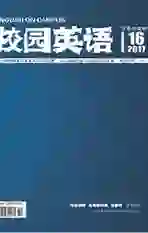The Translation in the Cultural Revolution
2017-07-13黄静莉
黄静莉
【Abstract】The Cultural Revolution was a unique period in Chinese history. Works from capitalist countries then were regarded as tools used to mislead Chinese people; therefore, the translations of these works were limited and translators then who entertained advanced ideas were harshly treated. Thus translation in the Cultural Revolution represented its uniqueness. This paper is to explore typical features of the translation in this period. And the features this paper lists mainly refer to the ones of the foreign languages to Chinese translations.
【Key words】translation history; the Cultural Revolution
The Cultural Revolution was a unique period in the Chinese history. Accordingly, translation in this period represented some rare features which made the translation then a unique part of the world translation history.
The most obvious feature is that translation in this period, controlled by ideology, sharply decreased. And specific features can be listed as the following four ones.
1. Translation works were from limited countries.
Some studies show that works translated then were mainly from three types of countries: the capitalist powers, socialist countries and China-friendly weaker countries.
Among those countries Asian countries counted up to 10, including Democratic Peoples Republic of Korea, Vietnam, Laos, Japan etc.; African countries, 3, including Albania, Mali, Guinea; European countries, 18, including the Soviet Union, Denmark, Poland, Germany, the United Kingdom and so on; American countries, 5, including Canada, the United States, Brazil, Cuba and Chile; Oceania countries, 2, including Australia and New Zealand.
Most of translations from the capitalist powers were scientific works. Literary works from capitalist countries were limited – only few of them, which were labeled as “progressive” or “revolutionary” works, were translated and published.
2. Science and technology translations were far more than social technology and literary ones, and most literary translations were limited.
NOTE:
A: Philosophy or politics works
B: Literature and art works
C: Science and technology works
From the chart above, it can be found that translation works suffered a sharp decrease after the Cultural Revolution breaking in 1966. Also, the conclusion can be drawn, from the data in 1970, 1973 and 1974, that translations of science were much more than other types of translations, because China then was less developed, especially in science and technology.
Moreover, literary translations were largely controlled by some politicians leaded by Gang of Four. A book was translated and published because it served those politicians political purposes rather than this book was of good value of the book.
3. Translations were added some comments on the contents of the origin text to impact on readers understanding.
Almost every translation in the Revolution was added a special preface, epilogue or article which aimed to show their political purposes to publish the translated book, that is, translations were used as the political tools. For example, the translation of a Soviet stage play was added the editors note which argued that the characters lines were wrong and criticized the government of the Soviet Union.
4. Many of translations were “Restricted Translation” with a few translations published to the society.
Most of the works published were from the countries which kept good relationships with China then, and these works were recognized by the authority like Chairman Mao and Lu Xun or were published as the political tools by Gang of Four.
The second form is restricted translation. These works could only be available to limited groups. Because their covers were white or yellow, people called them “white paper” or “yellow book”.
During the Revolution, Fu Lei and his wife committed suicide after maltreated by the Red Guard and Dong Qiusi passed away after suffering from persecutions. Although there were so many restrictions, some translators did not give up translating. And translations published a few years after the Cultural Revolution such as My Past and Thoughts translated by Barkin, Don Juan by Mu Dan (Zha Liangzheng) Ramayana by Ji Xianlin and so on were mostly translated during the Revolution.
Conclusion
To sum up, all translation works in the Cultural Revolution were for some political purposes. Thus those translations represented unique features which mainly included four aspects: the origin texts were confined to limited countries and themes, translations were added personal comments, and translators were reduced to political tools. All the features made translations in this period indispensable in the Chinese, even the world translation history.
References:
[1]何維克.“文化大革命”时期外国著作翻译出版情况概述[J].译苑新谭,2009,00:439-448.
[2]马士奎.翻译主体地位的模糊化-析“文革”时期文学翻译中译者的角色[J].临沂师范学院学报,2006,05:135-141.
